REINFORCED FIBERS : SLAB
Researching new materials and fabrication technologies through the adaptation of predictive behavior software & digital fabrication, as a group we set out to explore alternative approaches to topology optimization within architecture & construction with the goal to discover new opportunities from such an approach.
The Reinforced Fibers project focused on a traditional structural detail of a slab supported by a beam and column system. Via the implementation of mesh topology optimisation and computational design we aimed to remove the maximum amount of material while maintaining its structural integrity. This approach ruired each element to be considered in regards to the method of fabrication of its final form, a key part of the process to be able to realise the optimised component in physical form.
LOAD CONDITIONS
A static load of the structure is a vertical load which refers to the weight of its components, such as slabs, beams, columns. Structural loads are an important consideration in the design of buildings. Loads imposed on structures are supported by tension and compression forces transmitted through structural elements.
On this load condition process, we used millipede to ensure that the strength of the slab, beams, and columns are adequate. Millipede is a grasshopper plug-in which helps architects to identify these loads and show the greater stress through the components before the fabrication process. After the three iterations, we redesigned connector between column and beam and also changed the length of the beam from 1750 mm to 2000 mm. In this way, the forces transferred most appropriately from slab to the column.
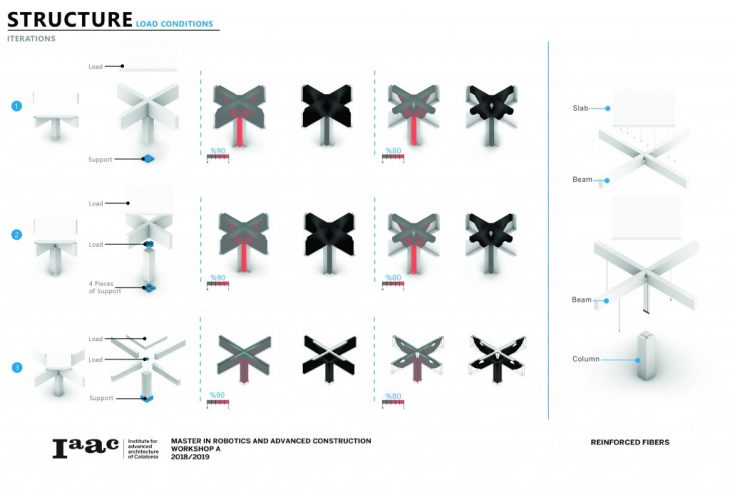
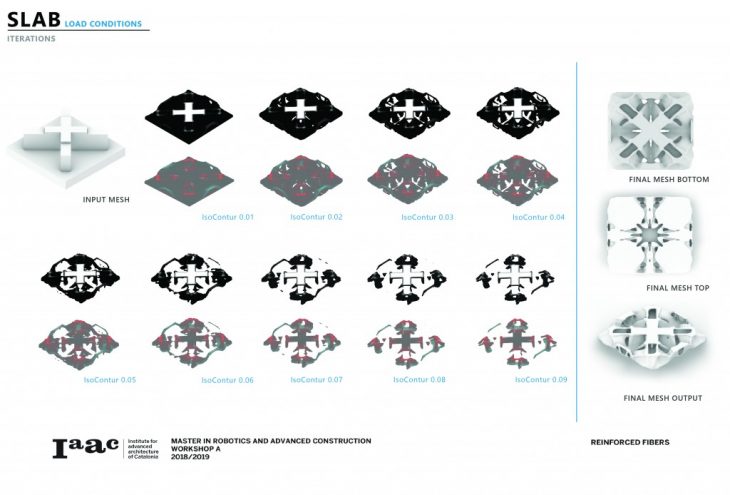
TOPOLOGY OPTIMIZATION
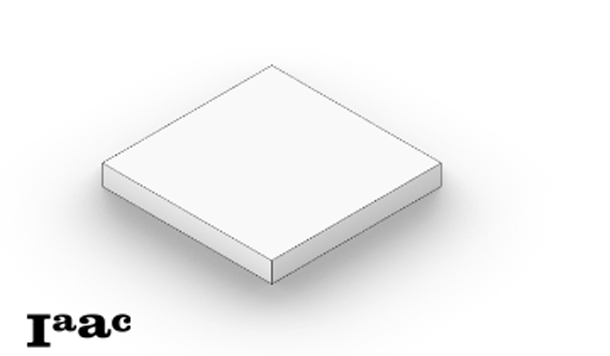
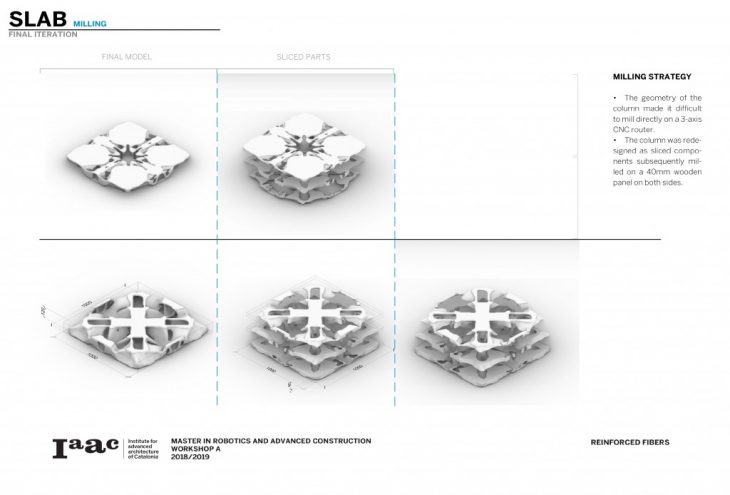
CNC-MILLING
Due to the dimensions of the CNC-milling machine Trex S-1215 we had to adapt our design in order to scale it down to the working area of the tool. We also sliced up the actual surface in order to be able to have the proper height we needed. We had 3 pieces with 40 mm height milled on both sides in order to lighten up the all structure.
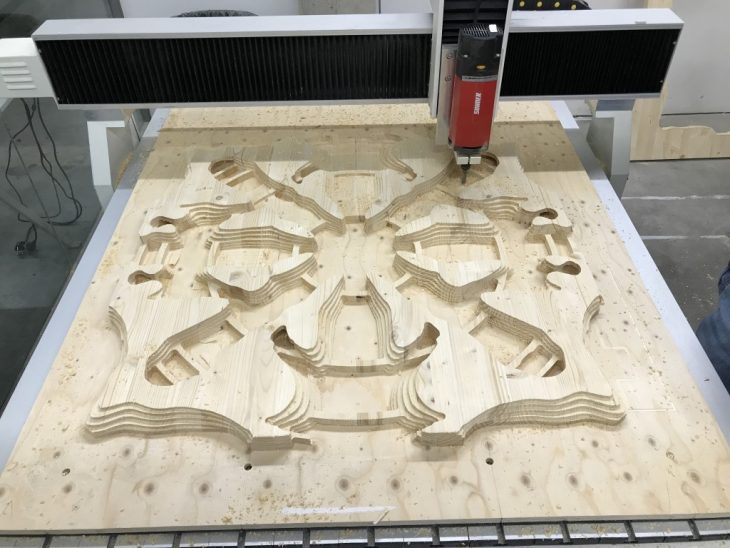
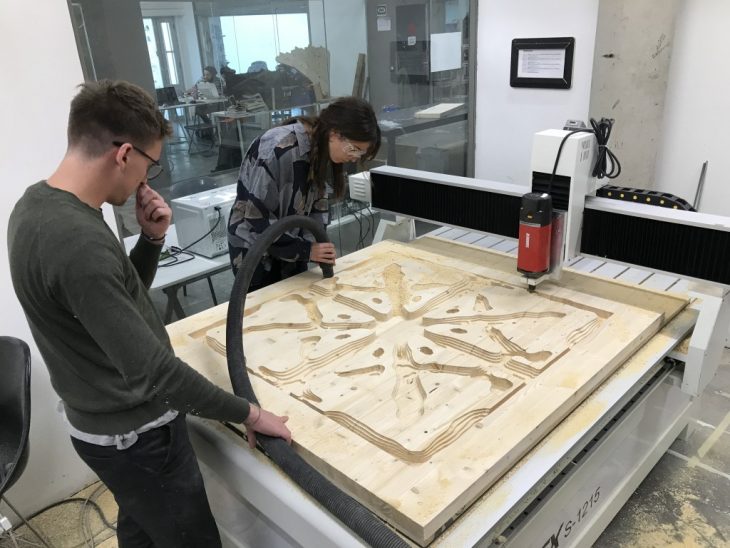
FINAL SLAB
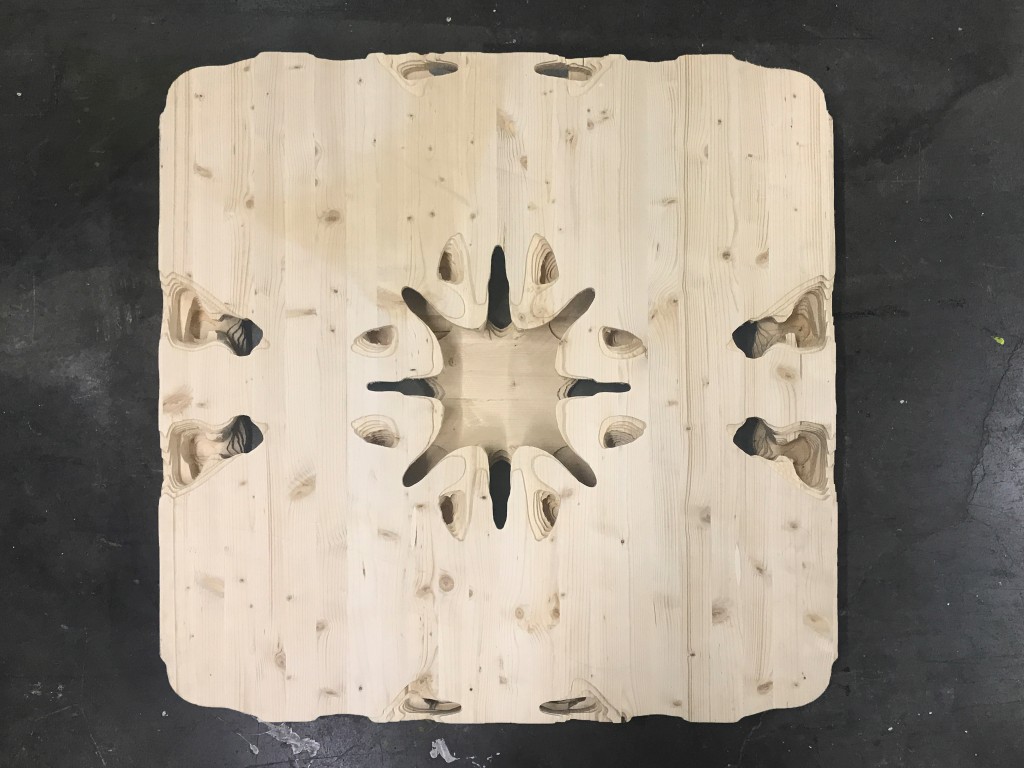
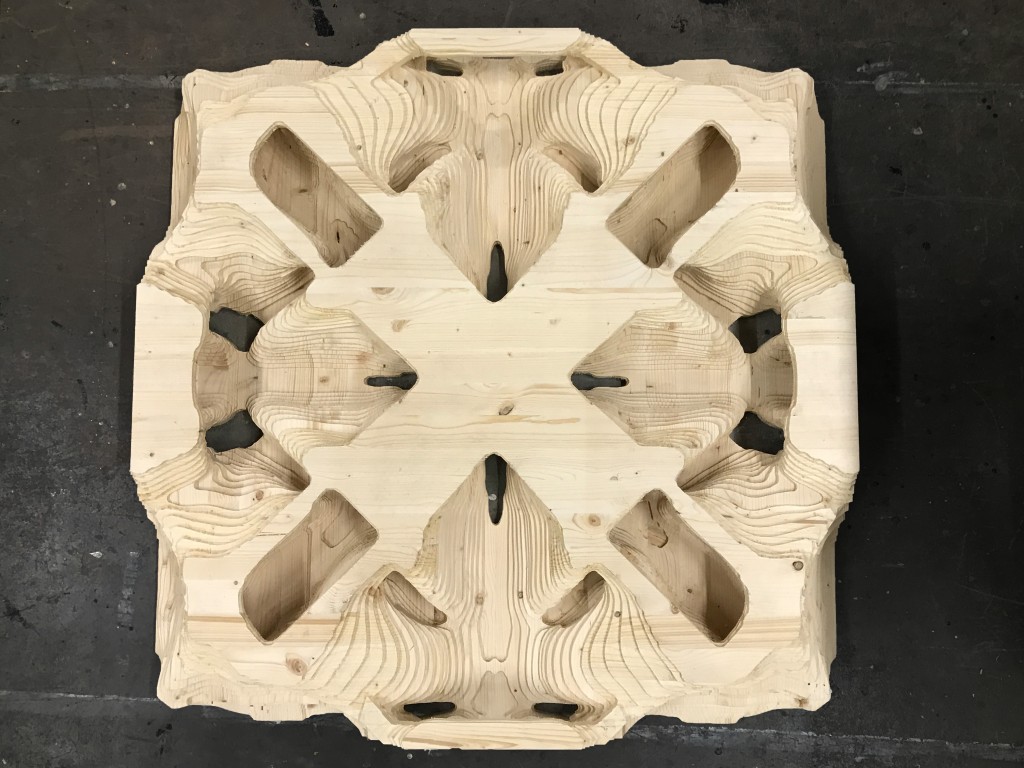
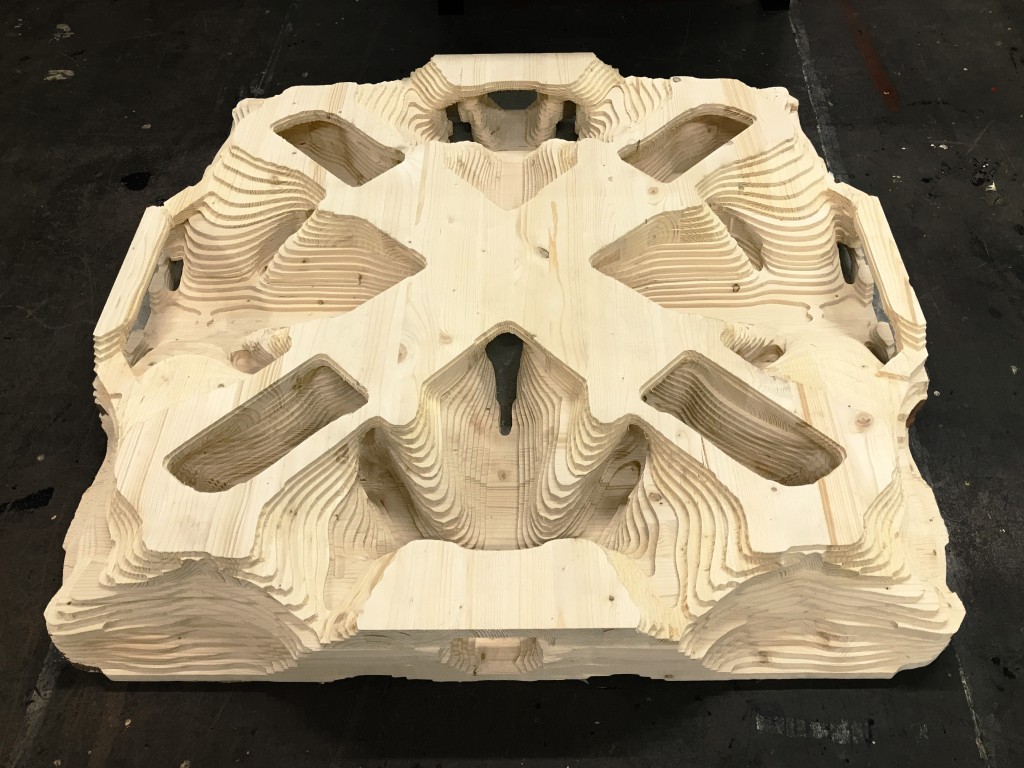

REINFORCEMENT
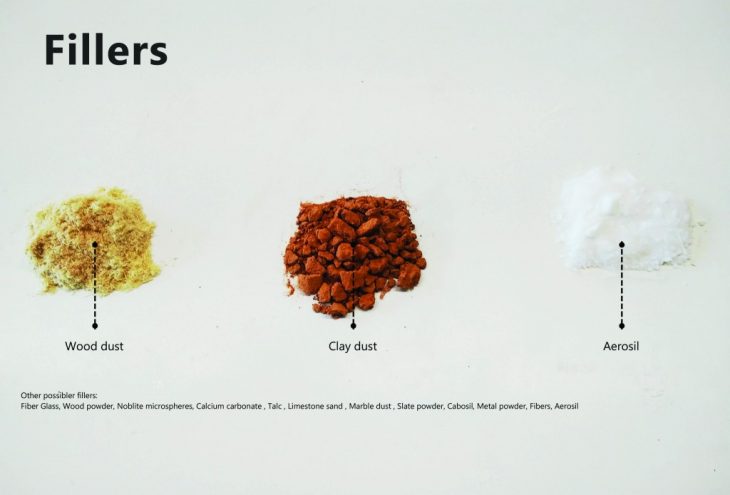
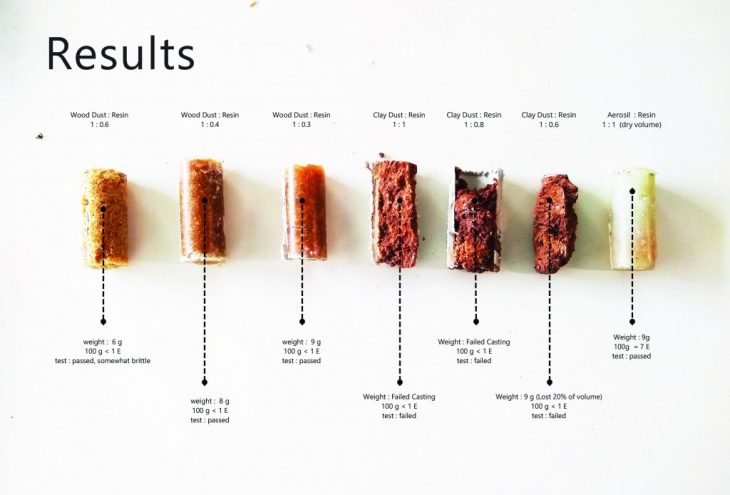
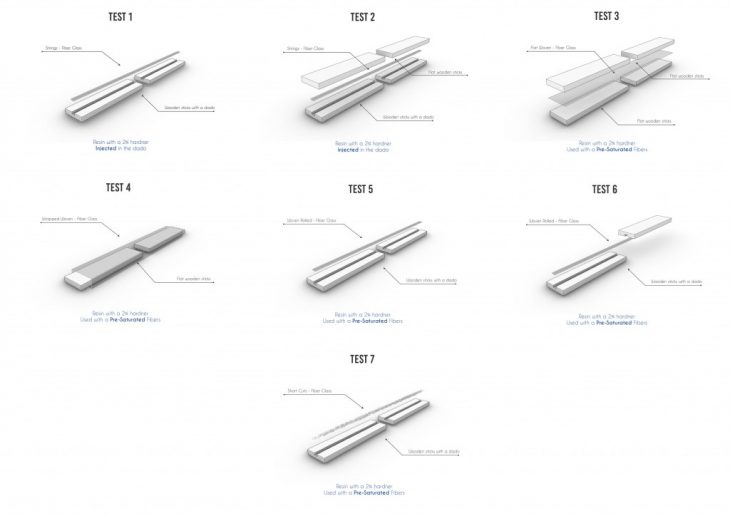
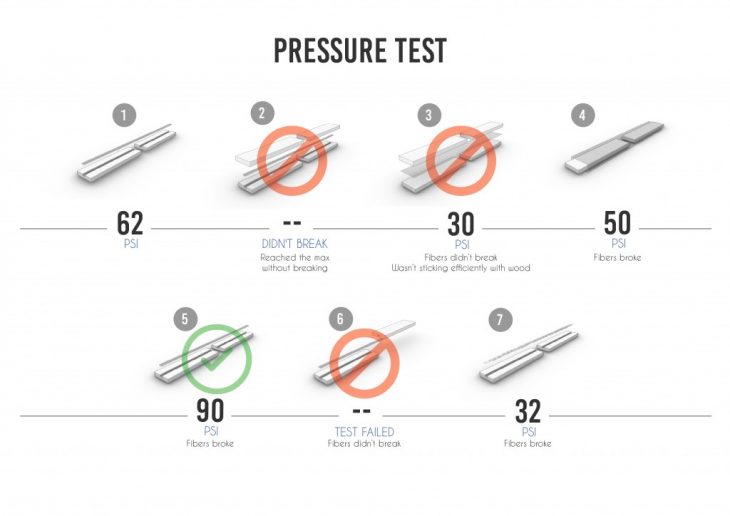
CONCLUSION
This exercise was a small step in an attempt to guide the discussion within architectural practice regarding resource conservation and the use of computation tools to produce efficient designs and structures. While the conditions to use topological optimization is not ideal for subtractive manufacturing like CNC milling, it can be used with greater efficiency in additive manufacturing processes like 3D printing. This exercise, if implemented on a larger scale can not only help reduce the material consumed which can lead to lighter structures but also effectively reduce the cost of the project. The next step for the project will be to subject the design to real load conditions and observe the performance of the design.
Reinforced Fibers is a project of IaaC, Institute for Advanced Architecture of Catalonia developed at Master in Robotics and Advanced Construction (M.R.A.C.) in 2018 by,
Students:
Whole system computation: Riccardo Mura
Structure joinery: Riccardo Mura
Structure load conditions: Hazal Yilmaz
Load conditions: Hazal Yilmaz
Mesh topology optimization: Sebastian Voigt
CNC milling: Sebastian Voigt, Riccardo Mura
Resin: Riccardo Mura
Documentation: Stefano Meloni
Video sourcing: Stefano Meloni
Faculty:
Aldo Sollazzo, Eugenio Bettucchi. Kunaljit Singh Chadha, Armin Akbari, Sujal Kodamadanchirayil